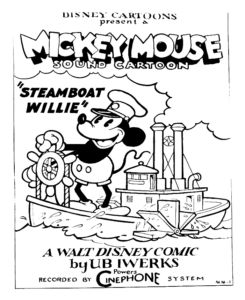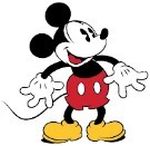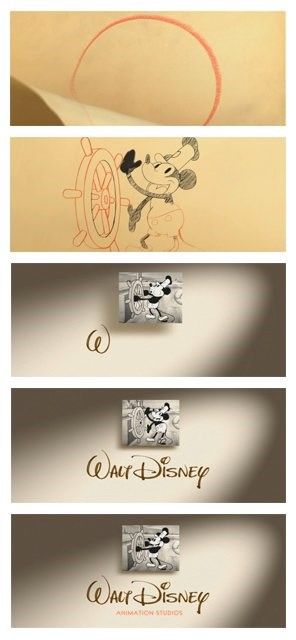January 1, 2024, brought numerous hangovers along with an unprecedented amount of media attention to intellectual property law. That is because, as of the new year, one of the most famous cartoon characters in history – Mickey Mouse – was let loose from the magic kingdom. Freed from the shackles of copyright, Walt Disney's iconic rodent was now in the public domain and, therefore, available for everyone to copy. But not so fast. It is no surprise that the legalities of the public domain are more complicated than the headlines suggest.
The law gives copyright owners a monopoly to exploit and monetize creative works. This monopoly is time-limited: it expires after certain periods have elapsed. Copyright protection is afforded to every original literary, dramatic, musical, or other artistic work, whether published or unpublished. The term of copyright depends on timing of creation and publication in the US, as well as the type of work in Canada. Once that term is up, the work enters the public domain and may be used without restriction in other or new creative works.
The public domain provides useful building blocks for new, creative works. Ironically, Disney itself is one of the biggest developers of new creative works based on public domain material: from Cinderella (based on characters depicted in the French book Cendrillon, from 1697) to Snow White (based on the brothers Grimm story from 1812), to cite only a couple of examples.
Notwithstanding its very active use of the public domain, the Disney corporation has worked relentlessly to keep its own properties out. In 1998 (not coincidentally the year before the first version of Mickey Mouse would have entered the public domain), Disney was part of a successful lobbying effort. Congress extended the term of protection for works made for hire from 75 years to the current 95 (or, in some cases, 120). The US Copyright Term Extension Act was referred to pejoratively as the "Mickey Mouse Protection Act" because of the entertainment conglomerate's outsized influence. (The actual name of the bill was the "Sonny Bono Copyright Term Extension Act," so named for its sponsor, best known as Cher's erstwhile singing partner, who died before its passage.) Copyright terms have been on a steady upward march. In 1976, in the US, copyright protection went from 28 years to 75 years for corporations and was no longer tethered to the life of the creator.
Not all Mickeys are created or treated equally. Only the very first iteration of Mickey Mouse and his better half, Minnie, that is the one appearing in the black-and-white 8-minute animated film "Steamboat Willie" released in 1928, is in the public domain.

The film Plane Crazy, first released as a silent movie, was actually the inaugural depiction of Mickey. Other versions of Mickey, namely those that came later, like The Sorcerer's Apprentice, are not free and clear.
The Canadian1 and the US2 copyright rules prescribe different terms of copyright. In both the US and Canada, copyright expires 70 years from the death of the artist/author (or the death of the last author if there are multiple authors).3 However, in the US, the copyright in a work made for hire expires 95 years from the date of first publication, which brought us Steamboat Willie last month, i.e. 1928 + 95.4
In Canada, "Steamboat" Mickey may have actually entered PD earlier. Although there were several animators on the team that created these cartoons, Walt Disney and Ub Iwerks are commonly credited with the creation of the Mickey Mouse character. Disney died in 1966, and Iwerks died in 1971, which means in Canada, the early versions of Mickey and Minnie Mouse came into the public domain on January 1, 2022 (50 years after Iwerk's death). Many believe that Walt Disney never died, having preserved his head, which could explain the origin of the Disney film title Frozen. For those who thought AI was a problem, cryogenics could really wreak havoc with IP law.
If a work has entered into the public domain, anyone is free to use that work (in whole or in part) to create a new work, or "remix", or to make a "derivative" work in a new medium. For instance, to turn a book, let's say The Great Gatsby, which entered the public domain three years ago, into a play or movie. But this does not mean use without restriction. Trademark law has something to say about use.
Consider the difference between copyright law — which is meant to encourage creativity for the benefit of society–and trademark protection, which is about identifying the source of goods and services and avoiding consumer confusion. Unlike copyrights, trademark rights do not expire. They may continue indefinitely, provided there is continued use of the trademark. In spite of the differences, there is some overlap between copyrights and trademarks when it comes to images, designs, and logos based on animated characters.
Rights owners have tried to use trademark law to extend copyrights, albeit with limited success. There is some authority for the idea that companies with expired copyrights may not indirectly get around the public domain by applying for trademark protection to reset the clock. In 2000, the United States Court of Appeals for the Ninth Circuit considered an appeal from the case of Comedy III Productions, Inc. v. New Line Cinema involved an attempt to enforce a public domain movie clip of the Three Stooges used as a trademark in the movie The Long Kiss Goodnight. It did not go well for the owners of the Three Stooges' rights as the Ninth Circuit kissed their claim goodbye.
This hasn't stopped Disney. In Canada, images of the newer versions of Mickey and Minnie Mouse are registered trademarks for use with a variety of goods and services.

Applicant: Disney Enterprises, Inc. Canadian TM app # 2221763
In the US, perhaps realizing that Steamboat Willie Mickey was soon passing into the public domain, Disney applied to protect that version (the one which plays before opening credits in Disney movies) in connection with entertainment services:

Designs of the newer versions of Mickey and Minnie Mouse are also registered USPTO trademarks. As anyone who has visited Disneyland with their kids knows, it's all about the merch. Caution is advisable since these trademarks are owned by a corporation with particularly aggressive IP enforcement policies. A key element in trademark infringement is whether a mark is being used as a trademark. In other words, if consumers view the use of characters as indicating that Disney authorizes products or services, then it is more likely to constitute infringement.
All to say, things are never as simple as they appear when it comes to IP. So please mash-up and meme away with "Steamboat" Mickey creatively, or even make your own Steamboat Willie–themed horror film (though that has been done and now enjoys its own protection), but prior to considering more commercial uses or the sale of products, consult with your lawyers; otherwise, you could end up in a mouse trap.
Footnotes
1. Copyright Act, RSC 1985, c C-42 ("CA Copyright Act').
2. Copyright Act of 1976, 17 U.S.C. § 101 et seq. ("US Copyright Act").
3. CA Copyright Act, s. 6; note that prior 2022, the term of copyright was 50 years, meaning if the author had died prior to 1972, the 50 year term would apply.
4. US Copyright Act, § 302.
The content of this article is intended to provide a general guide to the subject matter. Specialist advice should be sought about your specific circumstances.

